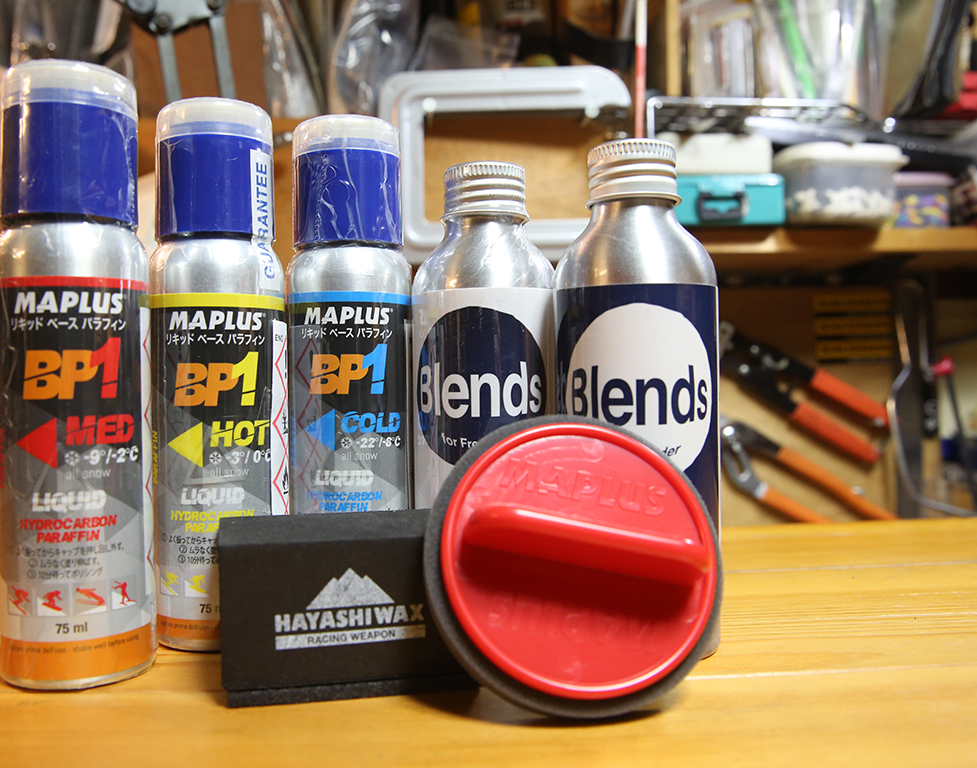INDEX
- "Waxing" that brings out more skiing performance
- The Keyword is liquid (liquid) Wax Highly recommended!
- But there is also a traditional method using solid wax.
- What is the compatibility between wax and stickers?
More than 15 years of experience -
Let's learn from Tabata, the owner of "bottomline"
This series is a project where Mr. Tomoyuki Tabata, owner of the pro shop "bottomline", teaches us the know-how of tune-up to "become more comfortable".
The theme this time is waxing. The season is finally here, so please use it to prepare for going out on the snow. See here (Topic_1) the start of this series project

"Waxing" that brings out more skiing performance
The second Topic_2 is "waxing".
The snow season has finally started. Before skiing, "If you do this, your condition will be completely different!"Waxing. A single wax can make a ski run better, and vice versa. Even though it's a good board, it's not slipping.
Therefore, let's have a tune-up professional teach you how to think about and handle wax so that you can ski in perfect condition.
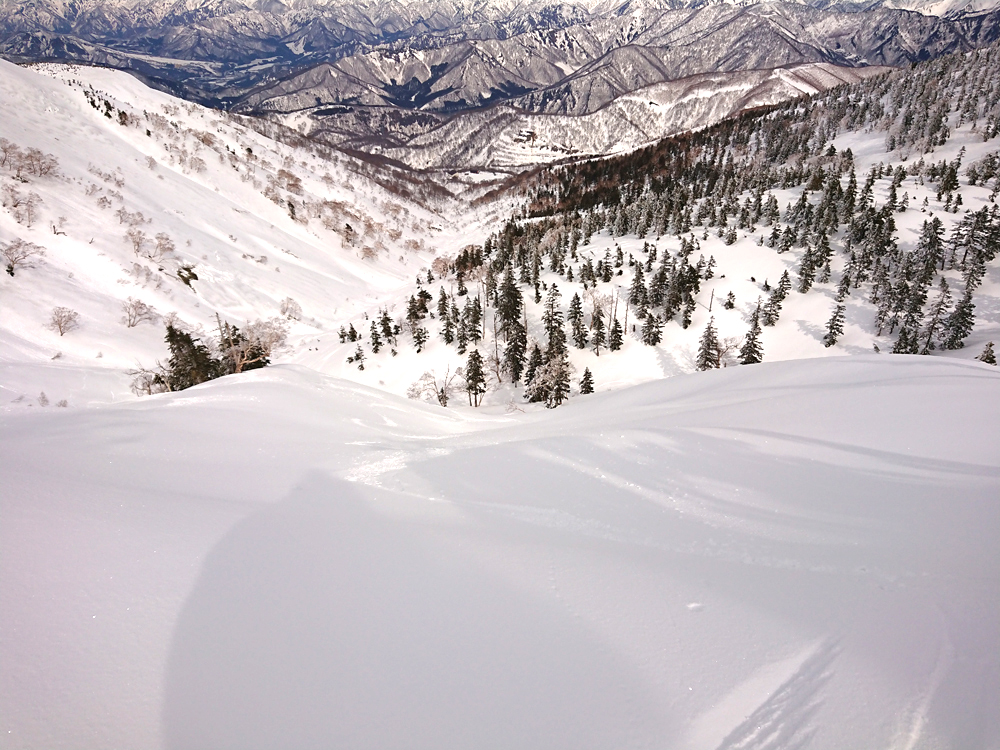
Times have changed. Waxing in freeride is...
When I hear waxing, some people still imagine a troublesome work and reflexively reject it. But times have changed. Waxing in freeriding, which is not particularly about ranking or competing for time, has changed a lot from the old days. The key is Liquid wax.
The keyword is Liquid (liquid) wax
Highly recommended!
The first thing that comes to mind when you hear the word liquid is so-called simple wax. But this, as you know, was not sustainable and was just a comfort. This is where the current liquid wax called "BASE WAX" and "TOP WAX" appeared. For example, something like this photo.
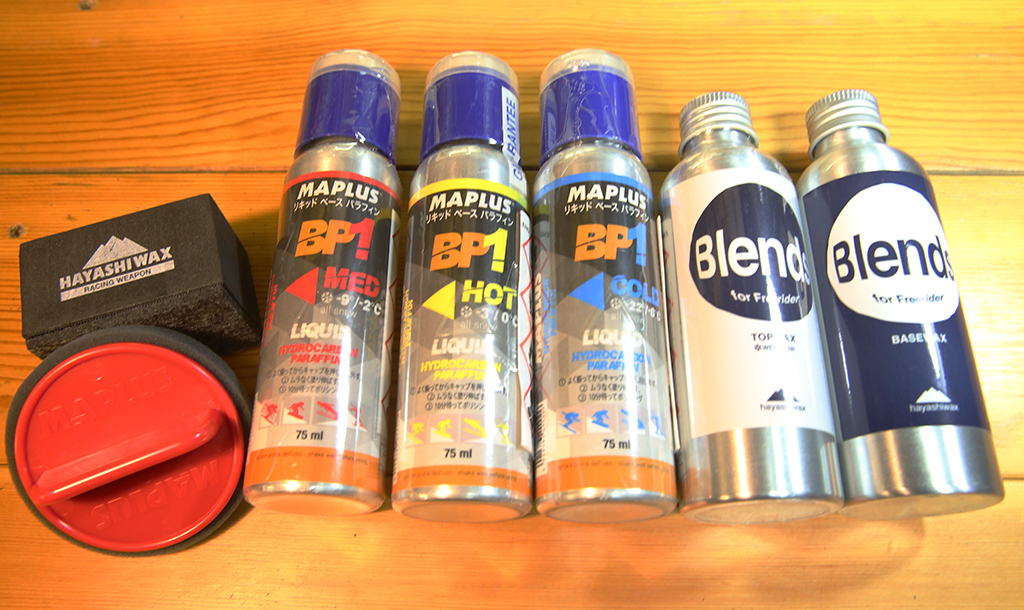
Easy to use.
Drop an appropriate amount on the special felt or sponge and spread it over the ski surface.

Just let it dry for a few minutes and then brush.
No scraping is required, so there is no wax shavings, and no iron is used.
With this, it is possible to do it at any time indoors or on the go, which is very convenient. I feel that hot waxing is better for longevity, but it can be applied more frequently, so it will cover the longevity.
Here's a quick recap of the basics of WAX
I wrote BASE and TOP (running), but in the first place wax is called BASE, and paraffin alone is enough to run.
Paraffin WAX is divided by the temperature zone used (mainly yellow, red, and blue), so you should be aware of that, but there are some that don't even have that listed (mainly white). And this paraffin WAX called BASE is often used by athletes alone during practice.
Gliding WAX is often expensive, and it is not necessary to use WAX for mastering basic techniques. By the way, the catalog clearly mentions training WAX. The reason for dividing the temperature range is simply to change the hardness of the wax. The reason is that there are various things, such as snowflakes sticking and not sticking, and we have to deal with them. Details are omitted here.
What is TOP (sliding) WAX?
What is its effect?
So, what is TOP (sliding) WAX? By adding additives such as fluorine, silicon, and other rare metals to the above paraffin, WAX is used to improve the gliding performance on the snow that matches it. That's why it's expensive.
However, putting aside the need for use in competitions, I think that free riding, including backcountry skiing, does not rely so much on the water repellency of fluorine.
C8 is no longer used, but recently there has been a movement to be cautious about C6 and lower fluorine. In summary, BASE (paraffin) WAX alone has basic gliding performance and is durable.
It is this TOP WAX that puts various properties on the surface. In that case, yes... This TOP WAX works best when you read the various conditions of the snow at that time and apply the wax. . This is the world where so-called servicemen compete in competitions. This is one of the things that makes gliding wax difficult.
A further advantage of liquid wax is "eco"
back to the topic. Another advantage of liquid wax. To put it bluntly, it means "eco". Since no iron is used, no electricity is required, and no scraping waste is generated. These two points are really big. Is that too? I don't know, but each company is increasing the number of liquid wax products like this.
there is also a conventional method using solid wax
That said, stay away from the traditional method of using solid wax.
Apply and remove base wax.
For freeriding, it is still recommended to use a waxing sheet when applying solid wax. Because it can be applied thinly = less wax consumption = easy to remove.

Points for applying and removing base waxing using a waxing sheet
point is...
When applying: Do it at a temperature that doesn't smoke, but the wax melts and spreads (check the video!)
When removing: Do not remove too much with the scraper
After peeling off to a certain extent, finish with a nylon brush a little early. If there is a place where the brush gets caught, lightly scrape only that place again. The trick to not peeling off too much is to lightly apply a scraper to the finished state after brushing for confirmation, and it is OK if it is still light and thin enough to be removed. In other words, it feels like that.
By the way...
What is the compatibility between wax and seal (climbing skin)?
"Climbing skin" is a must-have item for backcountry skiing and splitboarding.
Equipment that makes it possible to walk and climb by attaching this to the running surface and obtaining traction on the surface of the hair. In other words, you can't use it unless it sticks to the running surface. I want to make it slippery, so I'm going to paint wax on it, but it's bad if the climbing skin doesn't stick to it. This compromise is very important. In conclusion, in the case of backcountry skiing, pre-waxing should be kept to a minimum.
Of course I'm not saying don't do waxing. Let's assume the use of climbing skins in advance. It's obvious. So what do we do?
After hiking up, the climbing skin is peeled off and the final waxing is done on site. In other words, it is better to finish lightly in advance and carry WAX with good gliding performance to be used on site. Formally, it's an extension of simple WAX, or it's a companion to gliding WAX...
However, the real intention is to consider the environment here as well. We would like to reduce the use of fluorine as much as possible. For example, here is our original WAX.
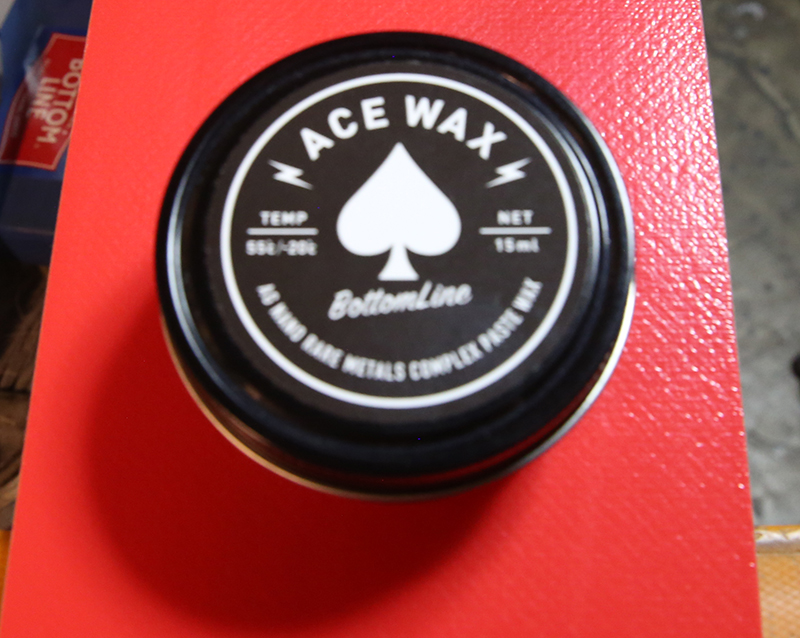
The sliding performance is improved by increasing the content of "Ag (silver) composite" without seeking sliding performance due to fluorine. Here, we tried to reduce the amount of fluoride as much as possible to the extent that it does not even affect gliding. By the way, WAX that doesn't claim the gliding properties of fluorine is currently on sale from various places, so please check it out.
In the next Topic 3, I will talk about "handling edges that change sliding".
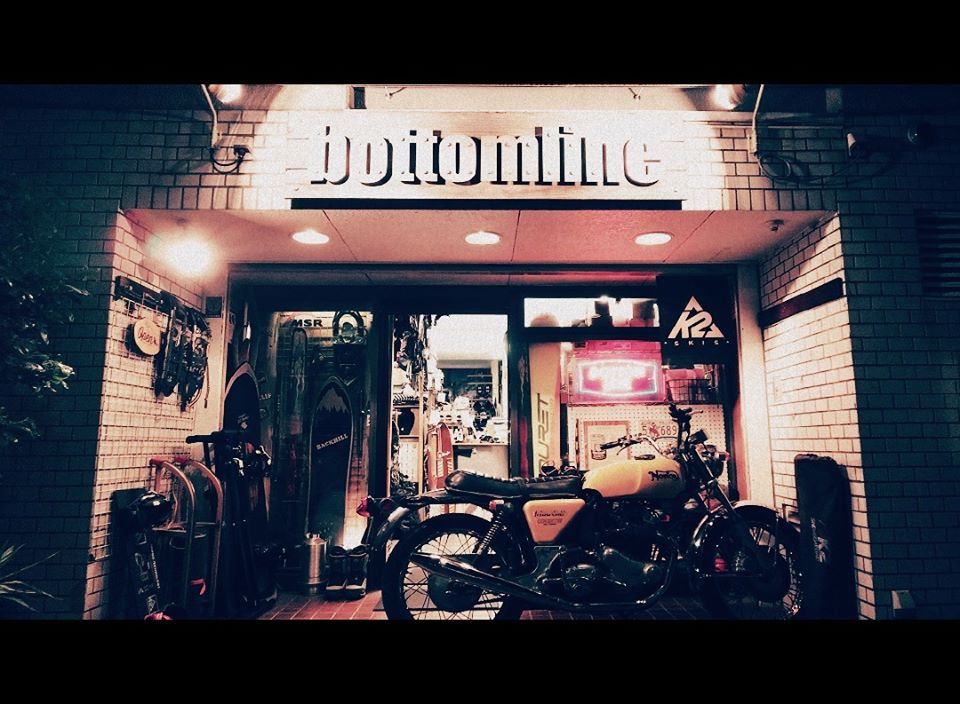
bottomline
http://bottom-line.jp
“The name of the store is ``bottomline'' because it is an image of a ``top-to-bottom'' skiing line. Rather, I wanted to make it a store for ordinary users, including the bottom layer. I want to listen to the sound of the engine like a local bike shop and think, ``Isn't this the cause of the problem?
Profile
Tomoyuki Tabata
Born in 1967, from Chiba Prefecture. In the late 90's, he was enrolled in a ski shop in Jiyugaoka at the time. After that, he learned TUNE-UP and opened a store "bottomline" in 2004 that fused them.
bottomline ) Composition: STEEP Editorial Department


